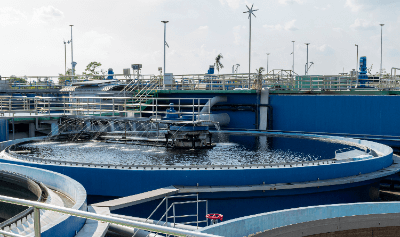What Is Wastewater Treatment Equipment?

Wastewater treatment equipment is designed to treat wastewater containing oil, acids, alkalis, or other harmful components.
Wastewaters often contain hazardous material contaminants that can have detrimental effects on the environment and human health if left untreated. Wastewater treatment equipment employs various technologies to remove or neutralize these hazardous contaminants.
However, since the composition and types of hazardous substances in wastewater can vary significantly, it is crucial to select the appropriate equipment based on the specific characteristics of the wastewater and its intended purpose.
Applications of Wastewater Treatment Equipment
Wastewater treatment equipment finds application in a wide range of industries and facilities, with a significant presence in industrial and chemical processes.
1. Factories and Manufacturing Facilities
Factories and manufacturing facilities often generate wastewater as a byproduct of their production processes. This wastewater, in the form of effluent, needs treatment to remove harmful substances and contaminants, minimizing its environmental impact.
2. Chemical Industry and Research Laboratories
In the chemical industry and research laboratories, chemical reactions and experiments frequently result in wastewater generation. These effluents may contain hazardous chemicals and organic solvents, necessitating the use of wastewater treatment equipment to eliminate harmful components.
3. Food Processing Industry
The food processing industry also produces wastewater from its production lines and cleaning processes. Proper wastewater treatment is essential to purify these wastewater and ensure compliance with environmental standards.
Principle of Wastewater Treatment Equipment
Wastewater treatment equipment employs various principles and technologies to remove or neutralize toxic substances and contaminants present in wastewater. One common method is combustion treatment, which detoxifies liquid waste by incinerating it. This method is widely utilized in industries such as petrochemicals and paper manufacturing.
Another prevalent approach involves the physical removal of contaminants, achieved by separating solids and suspended solids from the wastewater. This is accomplished using equipment such as filtration systems and centrifuges, capable of removing minute solid particles and insoluble materials.
Chemical reactions are also harnessed to break down toxic substances within liquid waste. Sedimentation tanks and sedimentation processes are employed to purify liquid waste by allowing heavy solids and insoluble substances to settle. Distillation units facilitate the separation of liquid waste by vaporization and condensation, allowing the recovery of pure components while removing solutes and contaminants.
Types of Wastewater Treatment Equipment
There are various types of wastewater treatment equipment. The following are some examples:
1. Filter Press
A filter press is a piece of equipment that separates solids by subjecting pressurized liquid waste to filtration. The liquid waste is forced through filter plates, compressing solids into a solid form under pressure. This process effectively separates liquid waste into solid and liquid components.
2. Centrifuge
This device utilizes high-speed rotation to separate solids from liquid waste through centrifugal force. The liquid waste is pressed against the inner wall of a rotating drum by centrifugal force, causing heavier solids to accumulate inside the drum. The clean liquid is discharged from the drum’s exterior.
3. Thickener
Thickeners are used to facilitate the settling of solids and insoluble substances in liquid waste. Gravity causes solids to settle at the bottom, and the purified supernatant liquid is discharged. Settled solids are typically collected and may undergo further treatment or disposal.
4. Distillation Unit
Distillation units are employed to separate and refine liquid waste components by vaporizing and recondensing the liquid. Volatile components are evaporated by heating the liquid waste and subsequently condensed to obtain pure components. This process effectively removes solutes and contaminants from the liquid waste.
Other Information on Wastewater Treatment Equipment
1. Types of Wastewater
Wastewater is broadly classified into organic and inorganic waste liquids.
Organic Waste Liquids
Organic wastewater can be further categorized into five types: “specified toxic organic solvents,” “photographic developing wastewater,” “photographic fixing wastewater,” “flammable wastewater,” and “nonflammable wastewater.” Organic waste liquids can originate from various sources, including home cameras, motion picture film, and x-rays. Treatment methods for organic waste liquids often involve combustion and biological treatment.
Inorganic Waste Liquids
Inorganic waste liquids are also categorized into five types: cyanide waste liquids, mercury waste liquids, fluorine and phosphate waste liquids, heavy metal waste liquids, and acid and alkaline waste liquids. Treatment of inorganic wastewater typically includes neutralization, activated sludge processes, and coagulation-sedimentation treatments.
2. Regulations for Wastewater Treatment Equipment
The installation and management of wastewater treatment equipment must comply with the regulations set forth by the Ministry of Health, Labor, and Welfare. Standards for the installation of wastewater treatment equipment are required whenever inorganic wastewater is handled.
In wastewater treatment equipment, drains and pits mustn’t mix with effluents containing hydrochloric acid, nitric acid, or sulfuric acid and those containing potassium cyanide, sodium cyanide, or sodium sulfide. Mixing produces toxic hydrogen cyanide or hydrogen sulfide. Wastewater treatment equipment must be subject to periodic voluntary inspections once a year, and records of these inspections must be kept for three years.